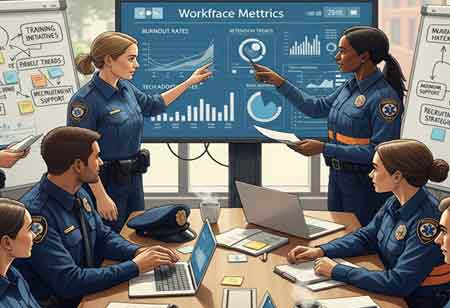THANK YOU FOR SUBSCRIBING
Be first to read the latest tech news, Industry Leader's Insights, and CIO interviews of medium and large enterprises exclusively from Gov CIO Outlook
THANK YOU FOR SUBSCRIBING

By
Government CIO Outlook | Thursday, May 19, 2022
Stay ahead of the industry with exclusive feature stories on the top companies, expert insights and the latest news delivered straight to your inbox. Subscribe today.
Towns become more efficient in various ways, from producing income forecasts to projecting spikes in demand for specific services.
FREMONT, CA: In today's era, sound decision-making is dependent on data. The vast majority of modern companies use some form of data analytics to better how they run, and local governments are getting on board. The most popular data analytics platforms collect historical data, which stakeholders can utilize to create plans, and strategies and guide decision-making. The most common type of data analytics is presenting or predicting a picture of what has happened but not what might happen in the coming days. It functions by integrating a few tools such as data mining, machine learning, and statistical modeling. It is currently used in various industries such as marketing, Operations, and Risk assessment.
Data gives a better prediction.
Local governments might better position themselves as proactive rather than reactive by gathering data that is then incorporated into prediction models. The more data fed into a predictive analytics system, the more robust the analytics become, so local governments should transfer their operations to a single cloud platform that can capture diverse data from various sources.
Forecast significant problems beforehand
Predictive analytics can help local governments respond more effectively to catastrophic events. For example, during the COVID-19 pandemic's surges, NYC Health + Hospitals used predictive analytics to forecast the number of extra ICU beds required. In the fight against the epidemic, some communities have employed predictive analytics to more effectively target hotspots.
It helps to evaluate the risk to officers.
Some cities have created an Early Intervention System (EIS) for their police force, which utilizes data to anticipate which officers are likely to have an unfavorable incident and may require counseling, training, or other intervention.
Cost-Effective for the transportation Industry
The local government uses predictive analytics to forecast when vehicles and transit infrastructure will require maintenance in the transportation business. Municipalities can save significant money by using predictive analytics in fleet management in sectors such as public transportation.
Enhanced flow of operations
Predictive analytics can transform local government operations by illustrating likely outcomes, identifying the needs to be met, and what community members need a voice, whether used for routine processes like financial planning or extraordinary circumstances like emergency management during significant events.
I agree We use cookies on this website to enhance your user experience. By clicking any link on this page you are giving your consent for us to set cookies. More info



